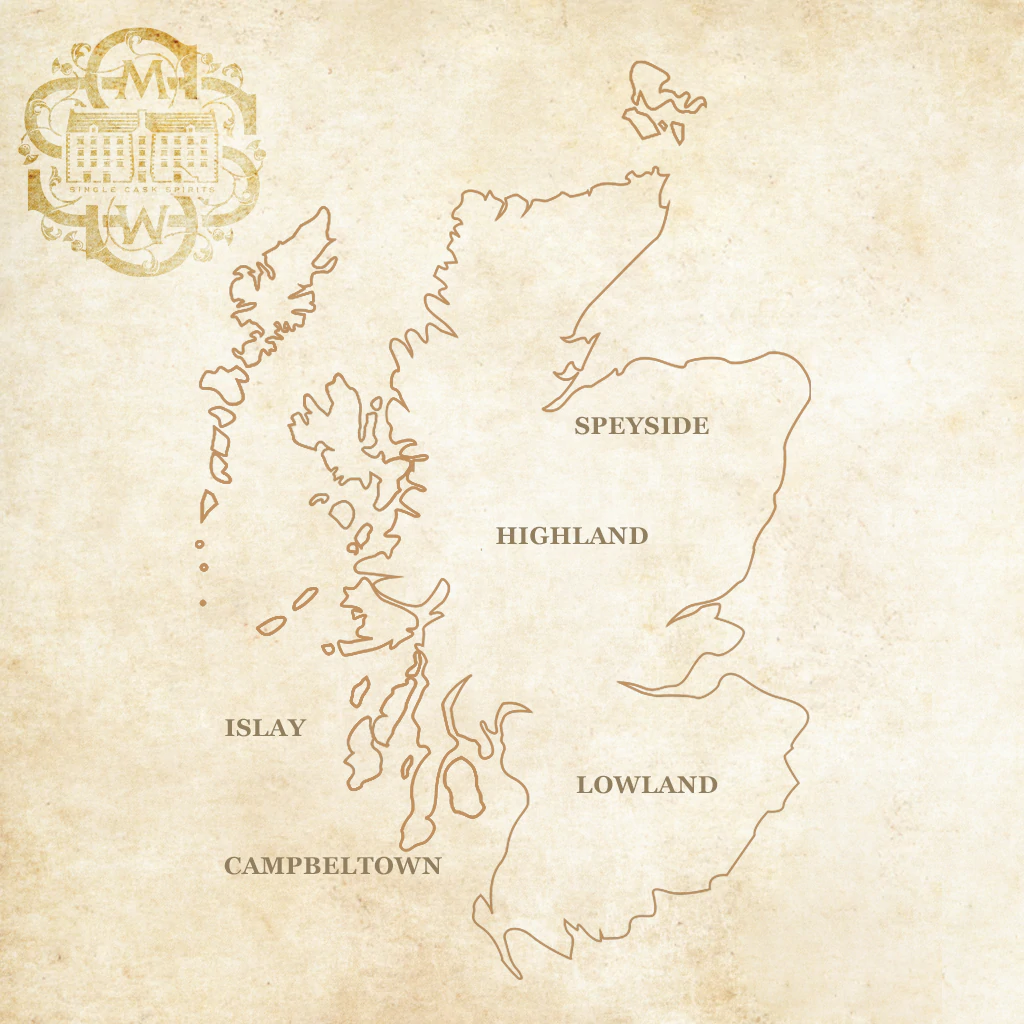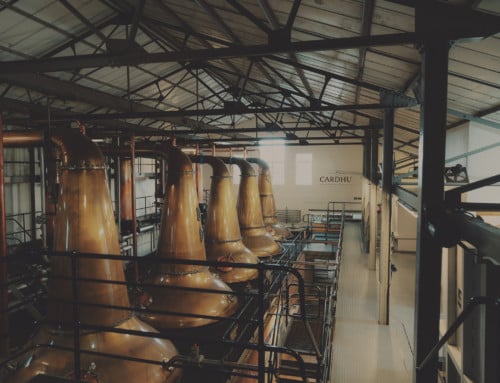Originally published on smwsa.com by Ben Diedrich
Edited by Adam Ioannidis
Scotland is home to over 130 active malt whisky distilleries today, many of which take great pride in their own process for producing the water of life. While each distillery makes whisky in its own way, there is a commonality that exists among nearly all of them. That commonality is the geographic region from which it is located.
Each with its own unique heritage, the five (5) whisky-producing regions of Scotland influence the style of whisky that its distillers create. Centuries ago, when many of the modern-day Scottish distilleries first began production, distillers often turned to their neighbours and local communities to learn the craft themselves. Thus, through this community-based spread of newfound knowledge and skills emerged distinct differences in both the styles and characteristics of whisky made throughout Scotland.
While the unique styles and characteristics of each Scotch whisky region are not strictly defined (or regulated) as they are in many of the great wine-producing regions of the world, they still hold some value today. Here is a simple breakdown of the broader characteristics of the 5 styles and a unique Society whisky that will allow you to experience each.
Speyside
Home to roughly 50% of all Scottish distilleries today, Speyside is often referred to as the heart of the Scotch whisky industry. With so many distilleries producing whisky within Speyside, it’s no surprise that the region is now producing a multitude of styles and characteristics. That said, a common style still exists among Speyside distillers today, which can be summarised as a soft and fruity spirit bursting with orchard fruity, honey and subtle baking spices. Cask 9.211 High Tea In The Garden is a classic example of the core Speyside style as we know it.
Highland
While Speyside claims the title of the largest region by whisky production volume, the Highlands is by far the largest region by geographic footprint. Its size plays a role in defining its core style, which is to say it’s somewhat difficult to pinpoint any one group of flavours. With distilleries separated by such a large distance and far fewer neighbours from which to learn from and emulate, Highland distilleries adopt their own unique approach to distillation. So while it may be difficult to define the Highland style in one flavour profile just by looking at the examples available today, there are some general differences when compared to the other regions. Highland whisky is often robust and earthy with notes of dried fruits and hay, with a faint hint of smoke. All of these characteristics are perfectly summarised in Cask 66.198 Serene Sunset Satisfaction, which I may add is one of my most memorable whiskies of the year!
Lowland
Situated just beneath the Highlands, the Lowland region of Scotland is known for producing whisky that is soft and gentle with common notes of freshly cut grass and honeysuckle. Some Lowland whisky is even triple distilled, giving it a light and airy character. Lowland distillers seldom use peat smoke in their whisky-making process, opting instead to produce an elegant and approachable spirit. We don’t currently have any Lowland whiskies available but keep an eye out for March Outturn coming soon…
Islay
The small island of Islay is home to 10 distilleries that produce some of the most sought-after whisky in all of Scotland. It is famous for its use of peat, which gives its whisky a bold, smoky profile. When combined with the saltwater and brine characteristics of the ocean surrounding it, Islay whisky is often an acquired taste. In terms of examples of the Islay spirit, well, it doesn’t get more Islay than 53.340 Loud Raves The Torrent An’ The Rain.
Campbeltown
The fifth and final official region of Scotland is Campbeltown. Once a powerhouse of a whisky producer, home to 34 distilleries, only 3 now remain. The quality, uniqueness and rarity of whisky produced in Campbeltown make it one of the most sought-after regions by Society members today. Not as intensely flavoured as whisky produced on Islay, Campbeltown whisky delivers notes of brine dried fruits and a thin veil of smoke in an often dry and industrial flavour profile. We just recently released a Campbeltown whisky, Cask 93.163 A Knock-Out Combination, which sold out on the same day. Keep your eyes peeled, though. If you have not yet tasted Campbeltown whisky, I would highly recommend giving it a try.
There is no doubt that each region of Scotland is unique. That being said, the boundaries are not always black and white. Islay distillers, for example, while known for producing peated whisky, are not the only ones doing it today. Several distilleries in Speyside have adopted the style of whisky for themselves, adding their own unique approach to producing smoky whisky. At the Society, we celebrate not just the classic regional representations but these very exceptions as well. Diversity is, after all, the spirit of single cask whisky and the soul of The Scotch Malt Whisky Society.
Slàinte mhath!
Ben Diedrich








